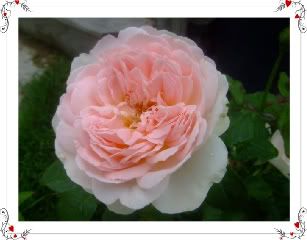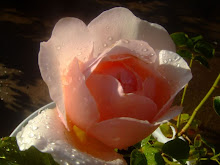Last year I graced my garden with 30 new roses. As first year roses I was quite pleased with their growth and blooms. I looked so forward, however , to this year when I hoped to reap the benefits of their beauty as they gained some height and their roots took hold. But....that is not what happened! The spring flush only contained a few blooms. I was so dissapointed. All that digging, spraying and fertilizing,and all I had were new canes which contained a litle black crispy growth where the rose bloom should be. What could it be?
I scoured the net for information. What I discovered was that I had a horrible infestation of rose midge. You can see a picure of whatthe crispy tips look like here:
http://members.tripod.com/sactorose/insects/14dips/14rosemidge-dam.jpgNow I am not a proponent of using pesticides in my yard. But rose midge will effectively devastate your blooms, and effectively wipe them all out. Females lay their eggs inside the sepals of flower buds or leafy tips. The larvae then hatch from the eggs and damage the buds and rose tips. The full-grown larvae may measure up to 1.8 mm long and are sometimes reddish in color. Pupation usually occurs in the soil but pupae have been observed in the damaged rose tips. They leave the damaged tips after which the buds wither, blacken, and die. I knew I had to get out the big guns for this. The adult midge is so small that you cannot see it.
They must have made it into my garden via infested soil or plant materials either sent through the mail or bought locally.
Here is how I solved the problem - Bayer Advanced Complete Insect Killer for Soil and Turf. I got the bottle for use with hose end sprayers. It contains Imidacloprid and cyfluthrin which have been found to be effective against midge. The idea is to blast the soil beneath the rose plant with the hose end spray and do this 3 times at 10 day intervals. This is necessary to break the cycle and destroy the larva of the midge which is in the soil. Please be careful when using insecticides and read the caution and tips for safety on the bottle.
Within a few weeks of spraying I had buds again! But I had basically lost almost a whole season of blooms!

